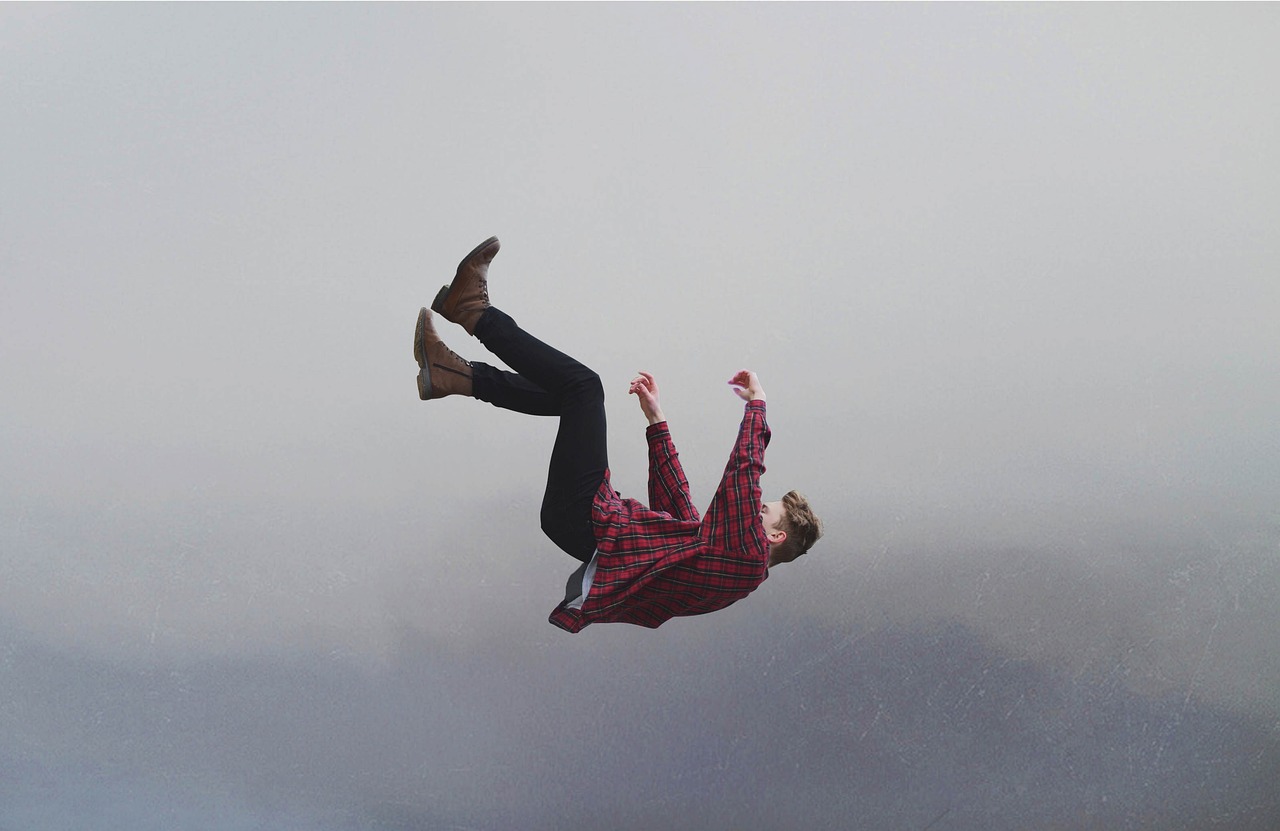We all remember the mocking jeers thrown our way whenever we’d trip and fall as kids, right? Well, it’s no different in Dungeons & Dragons. Just like in real life, there are plenty of ways to fall, and some of them are even fatal! We fall into fall damage explanations below, what causes it to happen, and some ways to avoid death by a long drop.
Table of Contents
How It Happens
Typically, there are two ways for your character to slip and take a tumble: the ground beneath you crumbles, or you fail a check involved in climbing. There are obviously other ways it could happen: you might be walking along a precarious edge and lose your balance or fail a saving throw with a projectile that knocks you off, but those are somewhat less common.
The checks involved will likely be Dexterity (Acrobatics) and Strength (Athletics). While Athletics gives you a better chance of climbing and staying put, Acrobatics is more broadly useful in staying on your feet. Anything that has to do with maintaining your balance will call for Acrobatics, avoiding effects that might push you over a ledge calls for Dexterity checks, and most DMs will allow you to use Acrobatics for scaling walls instead of Athletics.
Fall Damage
The Basic Text says A fall from a great height is one of the most common hazards facing an adventurer. At the end of a fall, a creature takes 1d6 bludgeoning damage for every 10 feet it fell, to a maximum of 20d6. The creature lands prone, unless it avoids taking damage from the fall.
So, if you fall more than 10 feet, you could be looking at a pretty serious amount of damage. At the maximum height, it’s an average of 60 points of damage and up to 120 points of damage if your DM rolls all 6s. In short, it’s something you want to avoid whenever possible.
How To Avoid Falling
There are a few ways to stay on your feet. If you have a Wizard in your party, they should have the spell feather fall prepared whenever possible. As a 1st-level transmutation spell, you can cast it as a reaction when you notice one or more people slipping over the edge. It has a 60-foot range, so you don’t need to be standing next to them, and one casting can affect up to five creatures at once.
Don’t worry if you have a bigger party, though, or are traveling with NPCs, because it isn’t a concentration spell. You can cast it once, wait six seconds, and then cast it again. Just remember that it only lasts for 1 minute, although that should be plenty of time to land since it slows your speed to a descent of 60 feet per round (600 feet in 1 minute). The spell negates all damage upon landing.
Even if you don’t have a Wizard, there are a couple of magic items, like the ring of feather falling and the feather token, that can give someone the same effects as the spell. The ring is constantly active, once you’ve attuned to it, and you don’t need to worry about spending any spell slots. However, the ring only grants them to you, so you can’t use it to save your friend.
The Monk’s ability Slow Fall kicks in at level 4 and can also be extremely helpful. It only takes a reaction, and you can reduce damage taken from a fall by an amount equal to five times your Monk level. When this feature first comes online, that’s 20 points of damage (equivalent to a 60-foot drop). If you continue your adventures as a Monk, you’ll eventually be able to negate a whopping 100 points of damage!


